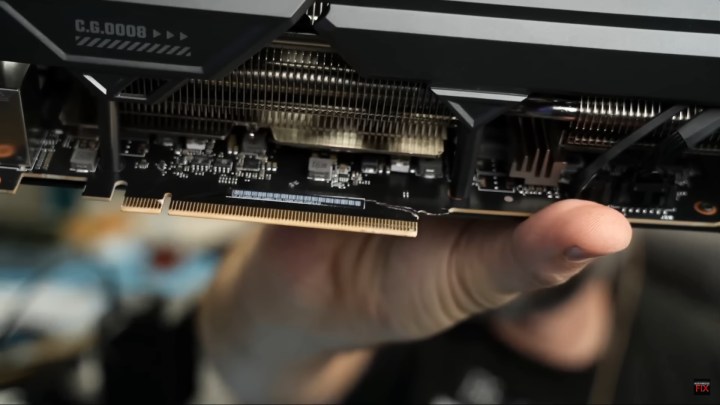
Nvidia’s RTX 4090 is the best graphics card out there, no questions asked — but is it the most reliable? Various reports tell us that it might not be, and today’s news is on a larger scale. A repair guru received a whopping 19 broken RTX 4090s, most of them with cracked PCBs. What’s the cause behind this issue, and should you be worried about this happening to other GPUs?
The grim report comes from YouTuber and repair professional NorthridgeFix. A customer sent in 19 RTX 4090 graphics cards in need of repair, and after inspecting each one, NorthridgeFix deemed most of them as impractical to repair — all due to their cracked PCBs.
You’d think that a small crack can be easily repaired, but it’s not as simple as gluing it all back together. A GPU as powerful and massive as the RTX 4090 is a lot more complex than it might appear to be on the surface. Its PCB is usually made up of 12 to 15 layers, each with countless electrical traces. Even if the surface-level damage doesn’t seem too bad, those traces still need to be connected once again, and as NorthridgeFix explains, there’s no guarantee it’ll be worth the time and money.
“Can it be done? Yes. But it’s not practical, it’s not economical, and there’s no guarantee that this problem will not happen again after repair,” said the YouTuber, discarding those cracked cards one after another.
Why does this even happen? There are a few theories, but the main one is that the RTX 4090 is simply a very heavy GPU. Taking up over four slots, it’s more of a hefty brick than a graphics card in terms of weight and size. Adding an additional support can help in these cases where you don’t want to rely on the card to sit tight without it. A card the size of the RTX 4090 almost requires a GPU support bracket, but this doesn’t always come included in the box. Aside from the lack of support, the GPU could have been installed in a system and then sent to the customer as part of a PC, so even if it was installed properly, a rough time in transit could have displaced it and caused cracks.

NorthridgeFix also wondered how a single customer even came to own 19 damaged Nvidia RTX 4090 graphics cards, which are getting increasingly expensive — as if the $1,600 list price wasn’t bad enough. The YouTuber speculated that the customer might have bought these cards on the cheap, hoping to get them fixed and then sold at a profit. However, that’s not going to happen, what with most of them being deemed a “no fix.”
We’ve already heard our fair share of reports about issues with the RTX 4090, but so far, most of them concerned the 12VHPWR connector. When improperly installed, the connector might melt, rendering the GPU unusable. Despite various adapters and fixes, this issue still seems to occur from time to time. However, the GPUs NorthridgeFix inspected didn’t suffer from this problem and were, instead, mostly plagued by other issues.
Buying a GPU that’s this pricey and powerful often comes with the added expectation that it’ll run like a dream — and no wonder. Unfortunately, just as with the burning connector, it’s hard to pinpoint the exact culprit. Are all these cracked PCBs down to user error, or should manufacturers be blamed? It’s hard to tell, but one thing is for sure — the person with those 19 damaged RTX 4090s has over $30,000 worth of parts on their hands. They might come in handy in other GPUs, but they’ll never fetch the price of a working RTX 4090.



